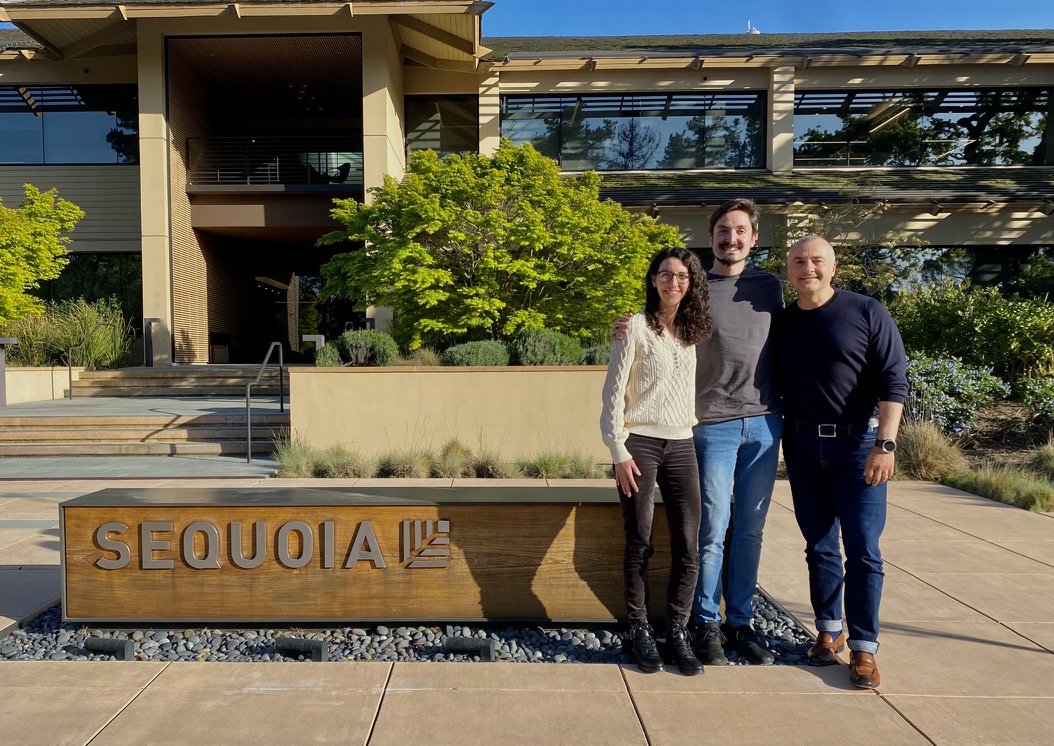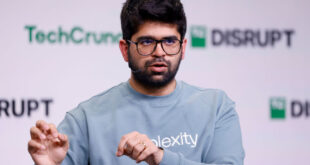A dearth of funding for vital open source technologies is leading to a swath of support from startups, unicorns, corporations, and even venture capital firms.
Last year, Bloomberg launched its FOSS (free and open source software) fund, committing up to $90,000 per year to various projects. And in October, Indian financial services company Zerodha launched a similar initiative dubbed FLOSS/fund, pledging $1 million annually to open source projects. The reason? “A significant portion of our success and growth is owed to FOSS,” Zerodha CTO Kailash Nadh said at the time.
“It goes without saying that this holds true for nearly every technology company founded in the last decade, whether it is publicly acknowledged or not,” Nadh added.
While there is no shortage of companies building businesses and raising money off the back of open source software, not every community-driven project lends itself to becoming a commercial entity. Some open source tools are more akin to Lego blocks: key components of a software stack, for sure, but difficult to monetize directly — particularly in the early days.
And this is why we’ve seen a steady rise in funding initiatives come to the fore. This includes reactive programs, such as 2022’s Big Tech-driven $30 million pledge to bolster open source security in the wake of the Log4Shell security flaw that wreaked havoc on the software supply chain. But we’re also seeing more proactive efforts, driven from all corners of industry.
Silicon Valley VC Sequoia Capital launched an open source fellowship in 2023 to support project maintainers with equity-free capital to cover living expenses for up to 12 months. Its inaugural fellow was Colombian software developer Sebastián Ramírez Montaño, creator of FastAPI, an open source web framework for building APIs.
In February, Sequoia revealed it would start accepting applications from any developer leading an open source project, with plans to provide funding for up to three qualifying projects annually. Nine months on, and the first two fellows from Sequoia’s expanded program have now been revealed: Chatbot Arena, a popular open source AI model benchmarking tool used by many of the industry’s biggest names, including OpenAI, Meta, and Google; and vLLM, an open source library focused on memory management to power faster and cheaper LLM serving.

Jolly good fellows
Chatbot Arena, which spun out of a broader research organization called LMSYS, is the handiwork of doctorate students Wei-Lin Chiang and Anastasios Angelopoulos from Berkeley’s Sky Computing Lab. With north of 1 million monthly users, Chatbot Arena is all about helping LLM developers validate claims around their models’ performance, while anyone can test these models and vote for their preferences. Companies such as OpenAI often share versions of their models with the Chatbot Arena team ahead of the models’ release to help fine-tune things before their formal launch.
While Chatbot Arena receives financing as part of the creators’ doctorate research work at the Sky Computing Lab, the Sequoia fellowship award of $100,000 will help fund further technical development, including building a better interface.
“The Sequoia grant supports the development of Chatbot Arena’s website, covering full-stack development and server maintenance costs,” Chiang told TechCrunch. “This is a gift to support the open source project, with no future obligations.”
Sequoia isn’t the only VC firm to lend equity-free support to Chatbot Arena; Andreessen Horowitz launched an open source AI grant program last August, and Chatbot Arena’s umbrella outfit LMSYS was among the second cohort of recipients.
Chiang said that there are no plans to evolve the project into a commercial entity, underscoring the need for alternative sources of financing — now, and perhaps long into the future.
“As part of our long-term vision, we may establish a nonprofit organization to host the leaderboard, keeping our focus on broad accessibility and community impact,” Chiang said.
In tandem, Berkeley’s Sky Computing Lab also birthed vLLM in 2022, spearheaded by researchers Zhuohan Li, Woosuk Kwon, and Simon Mo, who started the project after developing a system to distribute complex processes across multiple GPUs more efficiently. vLLM leans on a new “attention algorithm” dubbed PagedAttention, which helps reduce memory waste and is already being used by developers at companies such as AWS, Cloudflare, and Nvidia.

Similar to Chatbot Arena, vLLM serves as the focal point of its creators’ PhD research work, and future commercialization is not currently on the agenda.
“At the moment, we do not have a plan to transition it into a stand-alone company — we are solely focused on making the open source project useful and widely adopted,” Mo said.
In addition to Sequoia’s $100,000 contribution for the year, other public sponsors include Andreessen Horowitz, which donated as part of its inaugural open source AI grant program last year, while the likes of AWS, Nvidia, and others have collectively helped vLLM cover its compute resources — which are not insignificant.
“For vLLM, we intend to use the fund to cover our continuous integration testing and benchmark suite,” Mo said. “These suites, running on GPUs, are expensive to maintain but critical to ensure the performance and correctness of vLLM for production usage.”
One clear message emerges from all this: AI and data infrastructure might be driving demand for open source technologies, but this demand creates significant costs for the project maintainers. Ion Stoica, professor of the computer science division at Berkeley and a Sky Computing Lab adviser, says that the funding pressure on open source project maintainers is “at least an order of magnitude higher” with the advent of LLMs.
“You have multiple kinds of GPUs, you have all of these other accelerators, and there’s also a difference in scale,” he said. “Ten years ago, most of the funding for a new startup would go to adding people; today, it’s going to infrastructure.”
Alignment
Digging a little deeper, and it’s clear that Sequoia’s involvement isn’t quite as altruistic as it might seem, owing to the fact that its two new fellows intersect with startups in its existing investment portfolio. By way of example, vLLM is used by Replicate, which Sequoia (and Andreessen Horowitz) backed across its Series A and Series B rounds.
Elsewhere, Sequoia last year co-led a $5 million seed round into an AI startup called Factory, with the startup’s founder and CTO Eno Reyes confirming that his company uses Chatbot Arena to “keep close track” of the top LLM options.
“They’re a key input to make sure we have the best product for our users,” Reyes said.
Similarly, Sequoia’s first fellowship award last year, FastAPI, leans heavily on Pydantic, the popular data validation library created by the eponymous startup in Sequoia’s portfolio.
However, Sequoia Capital partner Lauren Reeder told TechCrunch that this cross-pollination between fellows and portfolio isn’t a strict condition of its funding decisions, merely a “nice bonus” when things do align. And in truth, when an open source project is genuinely popular, there’s every chance that it will be picked up by one of Sequoia’s portfolio companies, which is a good way for the VC firm to hear about worthwhile projects.
In terms of how the funding is dispersed, Reeder says it’s open to whatever suits the team in question. For FastAPI, this involved making a direct payment to Montaño himself, which was simpler given that it was just the one individual. But where teams are involved, it makes sense to use a third-party fundraising platform such as Open Collective, which also comes with added transparency.
“For the two most recent fellows, we were supporting small groups rather than a single individual and Open Collective made it easier to manage the funds,” Reeder said. “Similarly, we’ve done both up-front payments as multi-install payments, depending on the needs of the project. Open Collective is more transparent, but the fees are not insignificant.”
Taking a pledge
There have been numerous other efforts to formalize open source project financing in the past five years alone, including dedicated FOSS funds from Indeed and Salesforce, a tacit acknowledgment that critical components of the tech stack are crying out for support.
One of the biggest efforts of late, however, hails from developer tooling unicorn Sentry, which itself has been donating to open source projects for many years. In 2021, Sentry adopted a more systematic program with firmer and more transparent commitments, and last month the company officially launched the Open Source Pledge to encourage other companies to get involved — either by donating directly through platforms such as GitHub Sponsors or Thanks.dev, or indirectly via foundations.
“We’ve run our program successfully for three years, but it’s not enough by itself to solve the open source sustainability crisis. So this year David [Sentry co-founder David Cramer] asked me to get other companies on board to make a bigger impact,” Sentry’s head of open source, Chad Whitacre, told TechCrunch.
The rules of engagement are thus: Commitments should amount to at least $2,000 per year for each developer the member company has on staff, which for Sentry itself translated to around $500,000 last year — $3,704 for each of its 135 developer headcount. Beneficiaries through the years have included Django, Python, Rust, and Apache. This year, Sentry has upped its own budget to $750,000, and with some two dozen additional members signed up to the Pledge at the time of writing, Whitacre is hopeful that open source software developers will see a little more compensation in the future.
“The primary intent with the Pledge is no-strings-attached payments to open source maintainers,” Whitacre said. “We vet companies when they join to ensure they’re complying with our guidelines, but there’s a fair amount of latitude within those guidelines.”
Aside from corporate members contributing cash, the Pledge has also attracted “ecosystem partners” to endorse the pledge, which includes foundations, individuals, and even storied VC firm Accel, which itself has invested in numerous open source startups through the years (including Sentry, both before and after it transitioned away from an open source license in 2019).
Accel partner Dan Levine said that if something is “truly critical,” then it should, in theory, be able to sustain itself as a business. The reality, though, is that if enough companies and developers are deriving value from a given open source project, there shouldn’t be any issues in getting financial support — at least in the early days, before the maintainers can forge a path to commercialization.
“In the case of open source software, while it can be used for free, users who find it essential are inherently motivated to ensure its sustainability,” Levine told TechCrunch. “The open source community, particularly on the demand side, needs to reassess its strategies and make more informed decisions to support critical projects. The Pledge is an excellent effort to galvanize the demand side to do what’s in their own best interests.”
Source link
 meganwoolsey Home
meganwoolsey Home



